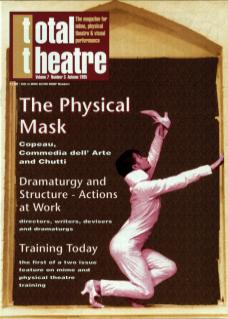Historically, the established training schools have looked quizzically at teaching the art of mime. It is a mark of our progress that most drama schools now feel impelled to include Mime and Physical Theatre in their curriculum. In the past this meant training for one and a half hours a fortnight, usually with dance-based teachers who had little practical knowledge themselves.
More worrying is the trend that began in the mid eighties of short course training. People clock up an impressive CV, spending anywhere from a weekend to three weeks, with a myriad of famed teachers. With no solid basis to build on, they cobble together a patchwork quilt of experience – wide, but not deep. They are useful for indicating areas to be explored fully, but can this count as training? You try synthesising Leabhart, Byland, Stein, Pagneux, and Litsedel with no previous physical knowledge.
Insanely, venues and non-vocational institutions often require companies to give workshops, regardless of their teaching ability. Teaching is an art. Good performers do not necessarily make good teachers. They can do untold damage, whilst for the trained practitioner short courses and 'Masterclasses' can be brilliant, opening up new directions or supplementing or changing the course of their work.
In Higher Education the teaching of theatre has always been biased towards the theoretical, with a few notable exceptions. Countless graduates, highly critical of their drama training, have come to my school to commit themselves to learning what it is about? Commitment. Not fitting training into your life, but fitting your life around it.
But that's all history. The following articles give personal comment on the way things are now.

